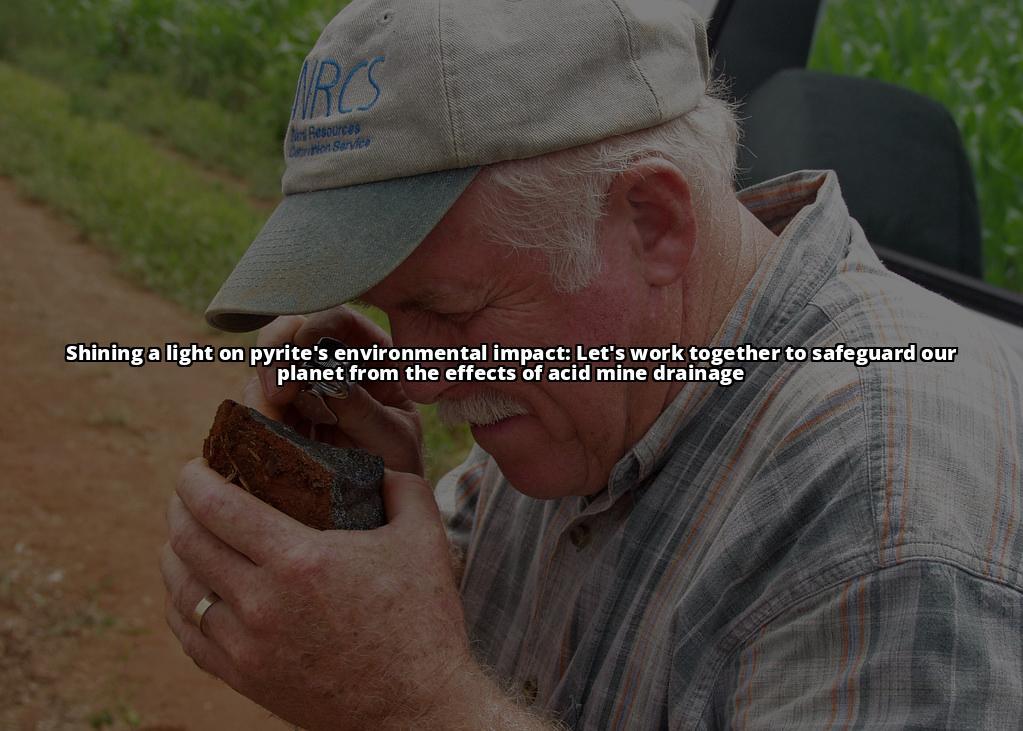What readers will learn from this article:
- How pyrite is formed and where it is commonly found.
- The physical and chemical properties of pyrite, and how it differs from gold.
- The uses and applications of pyrite, its environmental impact, and its significance in geological research and healing properties.
What is pyrite and why has it fascinated humans for centuries? Pyrite, also known as fool’s gold, is a captivating mineral with a shimmering golden hue and metallic luster that often leads to its mistaken identity as the precious metal it resembles. But beyond its alluring exterior lies a complex mineral with a rich history and a range of fascinating properties. In this article, we will explore the formation, properties, uses, and environmental impact of pyrite, shedding light on its role in geological research and healing practices.

Formation and Occurrence of Pyrite
Pyrite is formed through a combination of geological processes, typically found in sedimentary rocks, quartz veins, and coal beds. It occurs when iron-rich fluids interact with sulfur-bearing minerals under specific conditions, resulting in a chemical reaction that produces iron sulfide, giving rise to pyrite.
Notable locations with abundant pyrite deposits include Peru, Spain, Italy, and the United States. Peru boasts large deposits of pyrite, often with high-quality crystals. Spain is renowned for its perfect cubic pyrite crystals, while Italy is known for its excellent pyritohedral crystals. In the United States, states such as Utah, Colorado, Illinois, Pennsylvania, and Ohio have notable pyrite localities with unique crystal formations.
To gain a deeper understanding of the formation and occurrence of pyrite, refer to the “Pyrite: Mineral information, data, and localities” provided by Mindat.org.
Physical and Chemical Properties of Pyrite
Pyrite exhibits distinct physical characteristics that differentiate it from other minerals. Its brassy yellow color resembling gold has earned it the nickname “fool’s gold.” Pyrite possesses a metallic luster, giving it a shiny and reflective appearance. The crystal structure of pyrite varies, but it often forms in cubic, pyritohedral, or octahedral shapes.
In terms of physical properties, pyrite has a hardness of 6 to 6.5 on the Mohs scale, making it relatively hard compared to other minerals. Its specific gravity ranges from 4.8 to 5.2, significantly higher than most non-metallic minerals. These properties distinguish pyrite from gold, as gold is softer and has a lower specific gravity.
Chemically, pyrite is composed of iron sulfide, with the chemical formula FeS2. It consists of iron (Fe) and sulfur (S) atoms arranged in a crystal lattice structure. The charges on sulfur and iron in pyrite do not follow the expected pattern for purely ionic bonding, adding to its unique chemical composition.
For a more in-depth understanding of the physical and chemical properties of pyrite, consult the “Pyrite – Wikipedia” page on Wikipedia.

Uses and Applications of Pyrite
Throughout history, pyrite has found various uses and applications. In ancient times, it was used in early firearms as a source of ignition for the gunpowder charge. The sparks produced when striking pyrite against metal gave it the nickname “firestone.” Pyrite was also employed in fire-starting methods, such as creating sparks by striking it against flint.
In modern times, pyrite has several practical applications. It is utilized in the production of sulfur dioxide and sulfuric acid, essential chemicals in various industries. Additionally, pyrite is used in batteries, particularly in the manufacturing of lithium-ion batteries. The unique properties of pyrite make it a potential candidate for use in solar panels, contributing to the development of renewable energy technologies.
To explore the uses and applications of pyrite further, refer to the “Pyrite | Properties & Facts | Britannica” page on Britannica.
Pyrite vs. Gold:
| Property | Pyrite | Gold |
|---|---|---|
| Hardness (Mohs scale) | 6 to 6.5 | 2.5 to 3 |
| Specific Gravity | 4.8 to 5.2 | 15.6 to 19.3 |
| Color | Brassy yellow | Yellow |
| Luster | Metallic | Metallic |
| Crystal Structure | Cubic, | Nugget, flakes, |
| pyritohedral, | or grains | |
| or octahedral | ||
| Composition | Iron sulfide | Elemental Gold |
| (FeS2) | (Au) |
Distinctions and Comparisons
Pyrite’s resemblance to gold has often led to confusion and disappointment for prospectors and mineral enthusiasts. However, pyrite and gold have distinct differences that set them apart.
One key difference lies in their hardness. Pyrite has a hardness of 6 to 6.5 on the Mohs scale, whereas gold is relatively soft, with a hardness of 2.5 to 3. This disparity means that gold is much easier to scratch or deform compared to pyrite.
Another distinguishing factor is the specific gravity. Pyrite has a higher specific gravity than gold, making it significantly denser. This disparity allows experienced prospectors to differentiate between the two minerals by carefully measuring their weight relative to an equal volume of water.
Despite its deceptive appearance, pyrite possesses its own allure and beauty, making it a sought-after mineral for collectors and enthusiasts.
To gain a deeper understanding of the distinctions between pyrite and gold, refer to the “Pyrite: The mineral pyrite information and pictures” page on Minerals.net.

Environmental Impact of Pyrite
While pyrite may captivate with its shimmering beauty, it can have significant environmental consequences. One of the most concerning impacts of pyrite is its association with acid mine drainage. When pyrite comes into contact with water and oxygen, it undergoes oxidation, releasing sulfuric acid into the surrounding environment. This acid can contaminate water bodies and lead to the degradation of aquatic ecosystems.
Pyrite oxidation can also result in dust explosions in coal mines. The release of large amounts of sulfuric acid during pyrite oxidation can create hazardous conditions, endangering the health and safety of miners.
Additionally, pyrite can cause staining and deterioration in building materials. When present in construction materials such as concrete or natural stone, pyrite oxidation can lead to structural damage and compromise the integrity of the built environment.
To learn more about the environmental impact of pyrite, its connection to acid mine drainage, and its potential hazards, refer to the “Pyrite | Indiana Geological & Water Survey” page on the Indiana Geological & Water Survey website.
Case Study: Pyrite’s Role in Acid Mine Drainage
Introduction: Acid mine drainage (AMD) is a significant environmental issue caused by the oxidation of pyrite in mining operations. This case study explores the impact of pyrite on AMD and its consequences on water bodies and surrounding ecosystems.
Case Study Background:
Location: The case study takes place in a small mining town named Goldridge, located in a mountainous region of the United States.
Mining Operations: Goldridge is known for its rich pyrite deposits, which have been extensively mined for several decades. The mining operations involve extracting pyrite from underground mines and processing it for various industrial applications.
Environmental Impact: Over time, the mining activities have resulted in a buildup of waste rock containing pyrite. When exposed to air and water, the pyrite oxidizes, producing sulfuric acid and dissolved metals, which then contaminate nearby streams and lakes.
Consequences:
Water Pollution: The acidic water, known as acid mine drainage, flows into the local water bodies, causing significant harm to aquatic life. The high acidity levels make the water unsuitable for fish and other organisms, disrupting the entire ecosystem.
Erosion and Sedimentation: The acid mine drainage also leads to increased erosion and sedimentation in the affected water bodies. This sedimentation can smother the streambeds and destroy the habitats of various species, further contributing to the ecological damage.
Remediation Efforts:
Water Treatment Plant: In response to the AMD issue, the local government and mining companies have collaborated to establish a water treatment plant. The plant uses several methods, such as neutralization and precipitation, to remove acidity and metals from the contaminated water before releasing it back into the environment.
Long-term Solutions: Additionally, the mining companies have implemented measures to minimize the formation of acid mine drainage. These measures include the proper management of waste rock and tailings, the use of engineered covers, and the prevention of water infiltration into the mining areas.
Conclusion:
This case study highlights the environmental impact of pyrite in mining operations and the subsequent generation of acid mine drainage. It emphasizes the importance of responsible mining practices and the need for effective mitigation strategies to minimize the detrimental effects of pyrite oxidation. By understanding the consequences of pyrite’s role in acid mine drainage, stakeholders can work towards sustainable mining practices and protect the surrounding ecosystems for future generations.

Pyrite as a Collectible Mineral
Pyrite’s unique crystal formations and shimmering golden appearance make it a highly sought-after mineral among collectors. Its distinct cubic, pyritohedral, and octahedral crystal structures, combined with its metallic luster, create visually stunning specimens.
Notable pyrite localities worldwide offer collectors the opportunity to acquire specimens with exceptional crystal formations. Peru, Spain, Italy, Tanzania, and the United States are renowned for their pyrite deposits. Peru, in particular, boasts large deposits of pyrite with abundant and high-quality crystals. Spain is known for its large perfect cubic pyrite crystals, while Italy offers excellent pyritohedral crystals.
If you are interested in collecting and preserving pyrite specimens, it is important to handle them with care and protect them from exposure to air and moisture. By taking proper precautions, you can ensure the longevity and beauty of your pyrite collection.
Pyrite in Geological Research
Pyrite plays a crucial role in geological research, providing valuable insights into Earth’s history and ancient ecosystems. Its presence in sedimentary rocks and mineral deposits serves as an indicator of past environments and geological processes.
Scientists analyze pyrite to unravel the conditions under which it formed, shedding light on ancient ecosystems and the evolution of life on Earth. Pyrite’s preservation in fossils and its association with other minerals help researchers reconstruct past environments and understand the interactions between organisms and their surroundings.
Furthermore, pyrite is instrumental in the study of ore deposits and mineral exploration. Its occurrence and distribution can indicate the presence of valuable minerals, providing vital information for mining and resource extraction.
Pyrite and Healing Properties
Beyond its geological and scientific significance, pyrite is believed to possess metaphysical and healing properties. In various cultures and spiritual traditions, pyrite has been associated with abundance, prosperity, and vitality. It is believed to enhance motivation, boost self-confidence, and promote physical and emotional well-being.
Pyrite is often used in crystal healing practices, where it is believed to energize the body, stimulate the immune system, and alleviate fatigue. Its golden glow is thought to symbolize the warmth and vitality of the sun, infusing the user with positive energy.
While the healing properties of pyrite are not scientifically proven, many people find comfort and inspiration in its beauty and symbolism.
Conclusion
Pyrite, with its captivating golden appearance and shimmering luster, continues to fascinate and deceive us. As we have explored in this article, pyrite’s formation, properties, uses, and impact on the environment provide a multifaceted understanding of this intriguing mineral. From its historical uses in early firearms to its potential applications in renewable energy, pyrite has played a diverse and significant role throughout human history.
However, it is crucial to approach pyrite with caution, considering its potential hazards and environmental consequences. Responsible mining practices and environmental awareness are essential to mitigate the negative impacts associated with pyrite.
By appreciating the beauty and scientific value of pyrite while acknowledging its potential hazards, we can gain a deeper understanding of this remarkable mineral and the intricate workings of the natural world.
Remember to always exercise caution and consult experts in mineralogy and geology for comprehensive knowledge and guidance when dealing with pyrite.
*Note: This article contains
Common Questions
Question: What is pyrite?
Answer: Pyrite is a mineral commonly known as “fool’s gold” due to its yellow metallic appearance.
Question: Who discovered pyrite?
Answer: Pyrite has been known and used by ancient civilizations for thousands of years.
Question: How is pyrite formed?
Answer: Pyrite forms through the crystallization of iron and sulfur in sedimentary rocks and hydrothermal veins.
Question: What are the uses of pyrite?
Answer: Pyrite is used in the production of sulfuric acid, as a source of iron in steelmaking, and as a gemstone in jewelry.
Question: How can pyrite be identified?
Answer: Pyrite is identified by its metallic luster, brassy yellow color, and its ability to form cubic crystals.
Question: Isn’t pyrite valuable?
Answer: While pyrite may resemble gold, it has little to no monetary value as it is not a precious metal.






